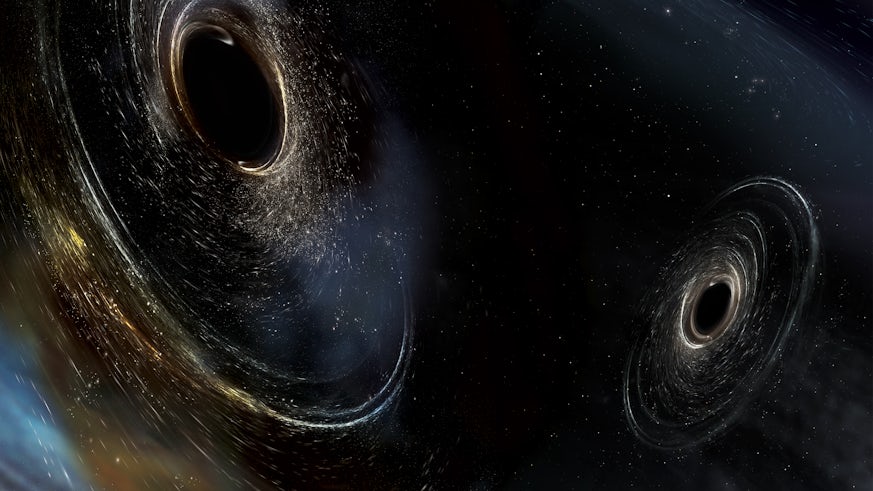Largest ever black hole merger detected
7 December 2018

Gravitational waves have been detected after the largest collision of black holes ever observed.
The collision took place roughly five billion years ago and produced gravitational waves that were observed on Earth by extremely sensitive detectors on 29 July 2017.
The gravitational waves – tiny ripples in space-time that are produced by violent cosmic events – showed that the black holes weighed more than 50 and 34 times the mass of our Sun and collided to produce a single object over 80 times the mass of our star.
This landmark discovery has been announced alongside three new detections of gravitational waves from merging black holes.
The discovery was made by detectors operated by LIGO (Laser Interferometer Gravitational-Wave Observatory) and the European-based VIRGO gravitational-wave detector.
Cardiff University has been a member of LIGO since its inception and has made key contributions to each of the individual detections of gravitational waves to date.
The announcement of this new batch of discoveries, which have been detailed in a paper uploaded to the ArXiv repository, means that a total of 11 gravitational wave detections have now been made to date – 10 from black hole mergers and one from the collision of neutron stars.
The paper documents results from two separate observing runs that occurred between September 2015 and August 2017.

This is an exciting transition to making regular observations. With more than 10 detections, we are now starting to really understand the properties of the black holes in our universe.
Director of the Gravity Exploration Institute
For the last 30 years Cardiff University has been developing novel algorithms and software that have become the standard search tools for detecting elusive gravitational wave signals. The University is also establishing a programme of experimental research into gravitational wave astronomy to complement its theoretical work.
Professor Hartmut Grote, from Cardiff University’s School of Physics and Astronomy, said: "It is exciting to see the fruits of decades of hard work on the instruments that facilitated all the detections.
“The instruments are now undergoing further improvements, to be ready for a new data taking run with unprecedented sensitivity starting in spring of 2019."
Dr Vivien Raymond, from Cardiff University’s School of Physics and Astronomy said: “After the wonderful achievement of the first detection, the new field of gravitational astronomy is delivering on its promises."
"This very first catalogue represents our knowledge of the gravitational-wave Universe, and it will from now on increase tremendously both in size and complexity."





